The Secret Guardian: St Nicholas Church, Studland
DORSET, ENGLANDST NICHOLAS CHURCHSTUDLAND
10/16/20236 min read
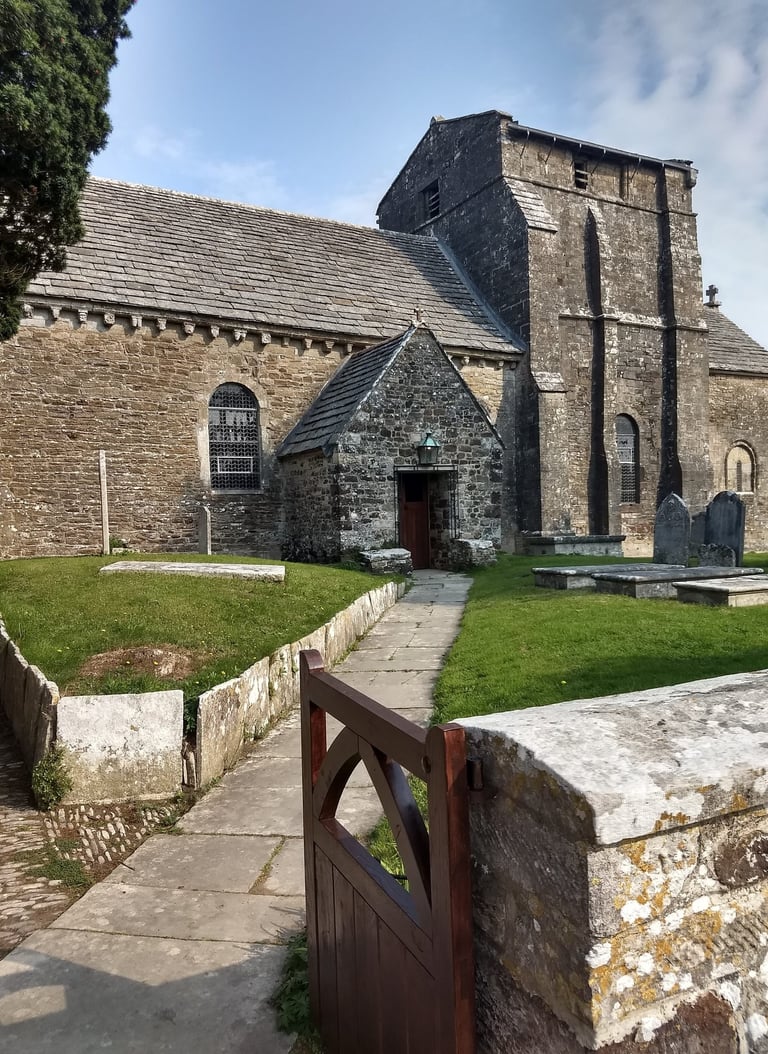

St Nicholas Church, tucked away in Studland, is quite simply one of our most ancient and untouched churches of England. Untouched by time, by the fads for modern renovations, and, thankfully, by the bombs that battered the Dorset coastline in World War II. It’s a Normanesque treasure, constructed in the 11th century on the site of a Saxon church.
In case you were not aware, Saint Nicholas is the patron saint of sailors among the many other jobs that this hard-working saint does the other three hundred and sixty-four days of the year. So it is more than fitting that this church is dedicated to him, sitting among the undulating Dorset hills, and looking out upon Studland bay, although, to imagine it’s former prominence and life as a beacon or sailors, you have to mentally erase the tall trees that now impede the view to the sea.

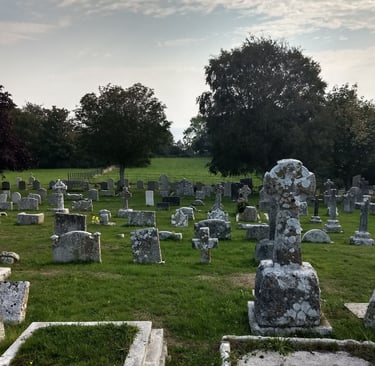
I was lucky enough to make a solo visit back in the summer of 2020 – lucky in the sense that I got to do explore exactly as I wished, while my parents took my son down to the beach. The trajectory of my morning pretty much became outline of the chapter in A Dorset Lammas where Ros and Gareth visit the church in search of the grave of Gareth’s relative, Captain Alex Milne, with the exception that I spent more time examining the tombs of the Bankes family, the great landowners of the area who commanded Corfe Castle until its demise in the Civil War, and then settled on the Kingston Lacey estate.
One of the reasons that the description of my visit languished as a draft in my previous blog is that St Nicholas’s has been documented quite extensively by amateur and professional enthusiasts. For a church history-oriented view, I recommend the write up on the Great English Churches blog. But here I am, adding to the small crowd of said enthusiasts with a novelist’s viewpoint.
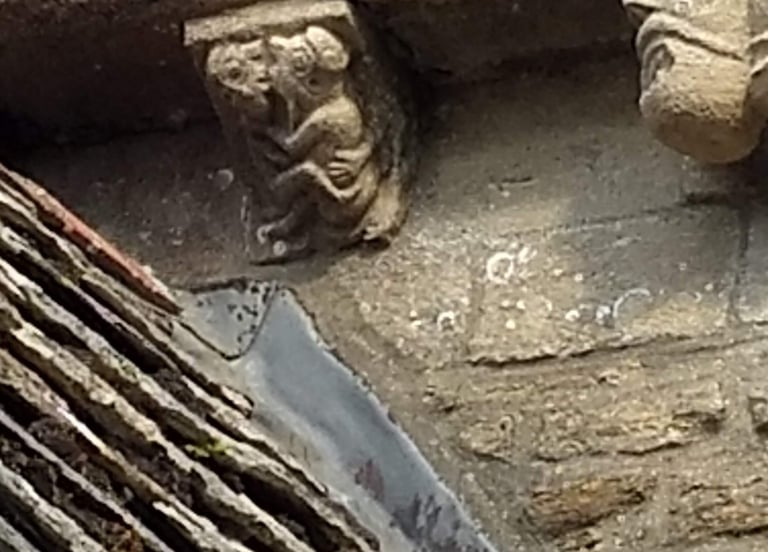



The church is described as being a contender for the ‘finest’ corbels in England. Or, as I have Ros say, the corbels are quite notable… ‘quite notable’ being a euphemism for ‘rather pornographic’. Among the usual animal heads, acrobats, musicians, grotesques and gargoyles, you can find a copulating couple, tucked against the apex of the church porch roof – which I personally speculate was the attempt of some later outraged vicar to hide them. Less easy to spot, as they are rather worn, are an impressive Sheela-na-gig (woman displaying her genitals) and what is technically known as a megaphallic carving (although the stone part in question has apparently fallen off through age). People get pretty excited about the origins of Sheela-na-gigs. Suggestions include a ward against evil (apparently the Devil runs a mile if you show him your genitals), a nod to ancient goddesses, or a fertility symbol, and loosely group them with Green Men. To get the, ahem, most out of this part of your visit, I recommend reading something like the Great Churches page mentioned above so you know what you are looking for.
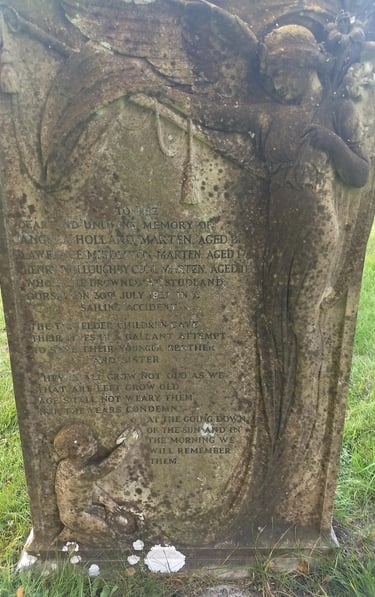

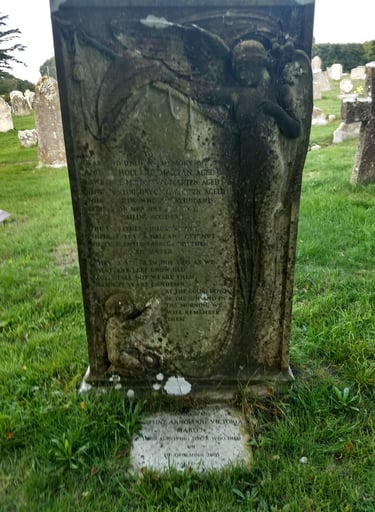

Since the object of my characters' visit was to locate a grave, I of course spent a lot of time wandering among the headstones. This wasn't a sacrifice, since I'm one of those people who find gravestones fascinating, which is odd, given how easily spooked I am by the supernatural. The gravestones here are pretty modest, apart from the Bankes family tombs. I understand that not everyone gets excited about this subject, so I'll limit myself to one find that almost had me jumping up and down in excitement (apologies to the relatives):
If you can't read it, it is dedicated to three children in the Marston family who died in a sailing accident at Studland in 1927. Tragically, it reads that the two elder children died in their attempts to save their younger siblings. Only one sister survived; she lived almost another 70 years and her little headstone is below. I think the angel bending over the little child playing is rather creepy, but what gave me a shiver down my spine was that I had already written a sailing accident into the novel, and this was fortuitous real-life foreshadowing. Of course, given that St Nicholas is on the coast, it's a wonder there are not more headstones commemorating drownings.
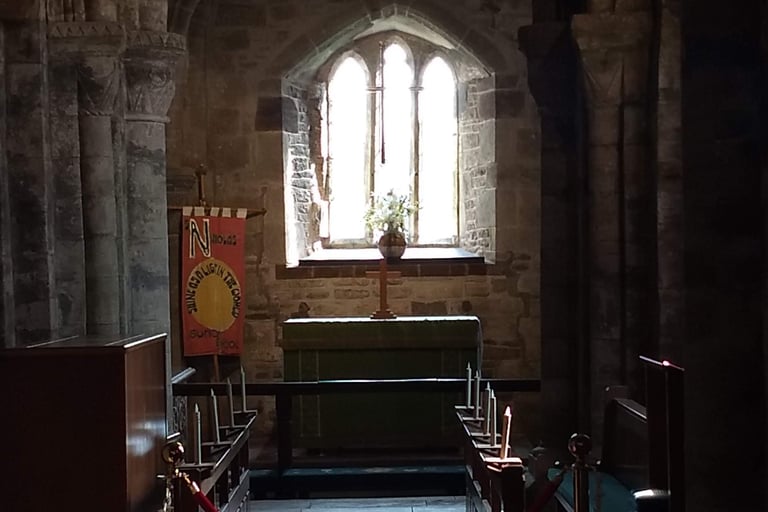

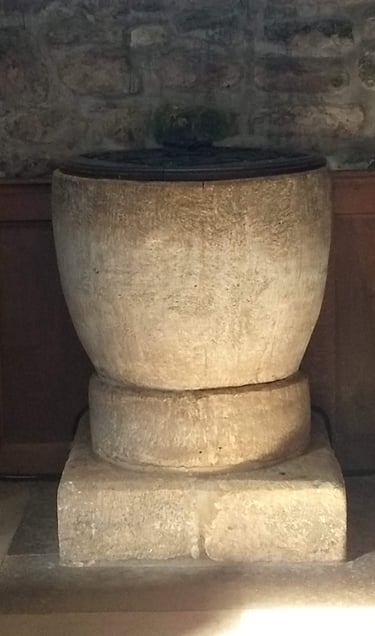

So, take a whiff of smelling salts, and draw a breath of relief as you follow me into the church. Since my visit was being during the Covid-19 epidemic, there was a notice asking for only one group at a time, and much of the church was roped off apart from a few central pews open for prayer. The inside is simple, but beautiful. I think I’ll offer my impressions through the eyes of my heroine, Ros Stephenson:
With a glance back at Alex Milne’s grave, we walked the few yards to the church. Inside, the stained-glass windows cast red and green light across the floor, and the smell of ancient wood rose to greet us. The chipped flagstone floor stretched towards the altar, the smooth columns and arch forming a cathedral aisle in miniature.
‘I think the place must have some ancient protective spell on it, because it escaped modernisation as well as bombs,’ I said.
Gareth surveyed the little space. ‘The stone is very plain in here. The mason must have expressed his creativity on the exterior of the church.’
I rested in a rear pew to give Gareth the space to wander the few steps up and down the church, with its simple altar at the front and the plain baptistery and narrow gallery squeezed across the back. I studied the faint traces of paint on the wall above me, wondering what it had depicted before the Puritans, most likely, scrubbed the offending picture away. Above the nave, verses from Psalm eighty-four proclaimed, ‘My soul hath a desire and longing to enter into the courts of the Lord: my heart and my flesh rejoice in the living God.’ I could not help thinking instead of the desire and flesh of the carvings outside. Was it like our fleshly longings compared to our inner souls?
Gareth slipped into the pew beside me. ‘Quite a hidden gem, especially that font.’
‘I’m glad you appreciate the font. People think it’s awfully plain, but it must predate this building. Can you imagine squalling Saxon infants being baptised in it?’
Back in the twenty-first century, my enthusiasm for my novel got the better of me, and I confess I hopped over the rope barring me from the altar area to get a close-up photo. When I hopped back, I caught my leg on the rope and nearly brought the lot down. A divine wagging finger? I don't know, but I resisted trespassing over the rope at the back and climbing into the gallery for a photo, mainly in case anyone else came in and caught me.
My own morning ended, not with disaster, but with a stroll down to the beach where I arrived just as Dad was buying morning coffees at Joe's Cafe, so perfect timing to a lovely interlude.
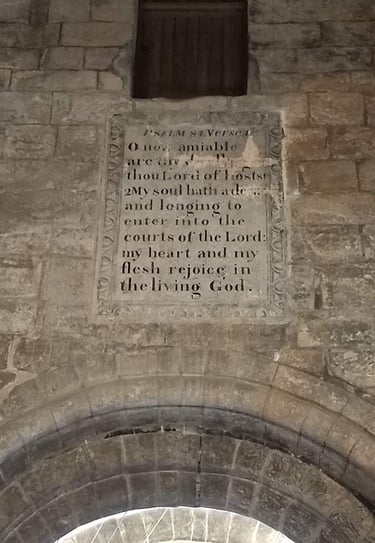

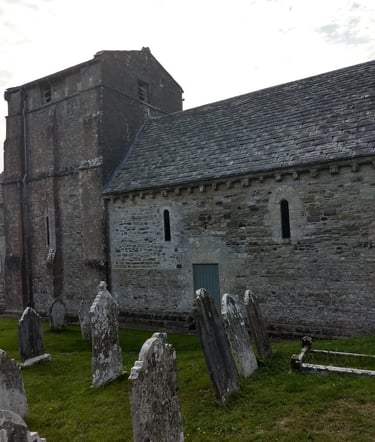

Sources and further reading:
Don't be like me and wait years to explore this gem of a little church when you visit Studland! The description of St Nicholas that I found most useful before my visit was this one, from the website Great English Churches. Or, visit St Nicholas Church's own website.
From the church, you are a short stroll from the beach and the Bankes Arms pub, and a little longer trek (on a clearly marked and popular path) to Old Harry Rocks, which feature in A Dorset Summer, and which I wrote about here.
For all things sheela-na-gig, start with the Sheela Na Gig project.
If this post really grabs your interest, I found an entire PDF book on carvings: Mawming and Mooning: Towards an understanding of medieval carvings and their carvers, by Bob Trubshaw. It's fascinating, and lavishly illustrated in colour.
